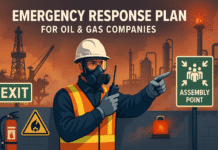
Hazardous Waste Management
Introduction to Hazardous Waste
Hazardous waste refers to materials that pose substantial or potential threats to public health or the environment. These materials result from various industrial, commercial, and household activities, containing substances that are toxic, reactive, flammable, or corrosive.
Understanding Hazardous Waste Management
Types of Hazardous Waste
Hazardous waste can encompass various categories, including chemical waste, radioactive waste, medical waste, and more. Each type requires specific handling and disposal methods to prevent harm.
Sources of Hazardous Waste
Industries, healthcare facilities, households, and agricultural practices contribute significantly to the generation of hazardous waste. Understanding these sources aids in designing effective management strategies.
Importance of Proper Hazardous Waste Management
The significance of managing hazardous waste lies in safeguarding ecosystems, public health, and preventing contamination of air, soil, and water sources. Inadequate management can lead to severe environmental degradation and health hazards.
Regulations and Laws Governing Hazardous Waste
Governments worldwide have established stringent regulations and laws to control the generation, transportation, treatment, and disposal of hazardous waste. Compliance ensures responsible handling by industries and entities.
Techniques and Methods for Hazardous Waste Management
Recycling and Reusing Hazardous Waste
Efforts in recycling and reusing certain hazardous materials help minimize waste generation and reduce the strain on natural resources.
Treatment and Disposal Methods
Various treatment methods, such as incineration, encapsulation, and biological treatment, along with safe disposal practices, aim to neutralize or eliminate hazardous components.
Challenges Faced in Hazardous Waste Management
Despite advancements, challenges persist, including technological limitations, cost-intensive procedures, lack of public awareness, and the global nature of waste management.
Hazardous waste management involves the proper handling, treatment, storage, and disposal of materials that pose a threat to human health or the environment. It's crucial to manage these wastes responsibly to prevent contamination, pollution, and harm to living organisms.Effective hazardous waste management typically includes identifying the type of hazardous waste, implementing safe handling procedures, using appropriate containers for storage, and ensuring proper transportation to authorized disposal facilities. Recycling, treatment, or neutralization of hazardous materials are also methods used to minimize their environmental impact.Government regulations and international standards play a significant role in governing how hazardous waste should be managed to protect both public health and the environment. Organizations and industries producing such waste are generally required to adhere to specific guidelines and laws to responsibly manage and dispose of hazardous materials.Benefits of Effective Hazardous Waste Management
Apart from environmental protection, effective management yields economic benefits, fostering sustainable practices and fostering a healthier society.
Educating and Raising Awareness about Hazardous Waste
Educational campaigns and awareness programs are vital in encouraging responsible waste handling and promoting behavioral changes among communities.
Responsibilities of Industries and Individuals in Waste Management
Industries bear the responsibility of reducing waste generation through eco-friendly practices, while individuals should participate in proper disposal and recycling efforts.
Community Involvement and Participation
Involving communities in waste management programs fosters a sense of ownership and encourages collaborative efforts toward a cleaner environment.
Global Perspective on Hazardous Waste Management
Collaboration among nations, sharing knowledge, resources, and best practices, is essential for addressing the global challenge of hazardous waste.
Conclusion: Ensuring a Safer Environment through Proper Management
Effective hazardous waste management is imperative for preserving ecosystems, safeguarding human health, and ensuring a sustainable future. By adopting responsible practices and leveraging technology, we can mitigate the adverse effects of hazardous waste.
How to Write Standard Operating Procedure
7 Steps of Standard Operating Procedure
Step-by-Step Standard Operating Procedure
Standard Operating Procedure Examples
List of Standard Operating Procedures
FAQs on Hazardous Waste Management
1. Why is proper hazardous waste management crucial?
Proper management prevents environmental contamination, protects human health, and promotes sustainable practices.
2. How can individuals contribute to hazardous waste management?
By segregating waste, using eco-friendly products, and participating in recycling programs, individuals play a pivotal role.
3. What are the common challenges in hazardous waste management?
Challenges include technological limitations, high costs, inadequate awareness, and the global nature of waste.
4. How does technology aid in managing hazardous waste?
Technology offers tracking, monitoring, and treatment solutions, enhancing efficiency and accuracy in waste management.
5. What role do regulations play in hazardous waste management?
Regulations ensure responsible handling, transportation, treatment, and disposal of hazardous waste, preventing environmental harm.
























